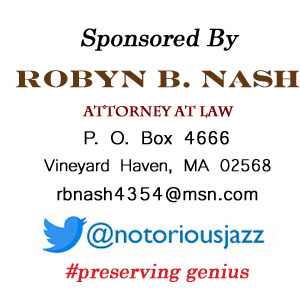
Daily Dose Of Jazz…
Yusef Lateef was born William Emanuel Huddleston on October 9, 1920 in Chattanooga, Tennessee and by the time he was five his family moved to Detroit. Throughout his early life Lateef came into contact with many Detroit-based jazz musicians who went on to gain prominence, including vibraphonist Milt Jackson, bassist Paul Chambers, drummer Elvin Jones and guitarist Kenny Burrell.
Proficient on saxophone by graduation from high school at the age of 18, he launched his professional career and began touring with a number of swing bands. In 1949, he was touring with Dizzy Gillespie and his orchestra. In 1950, Lateef returned to Detroit and began his studies in composition and flute at Wayne State University. It was during this period that he converted to Islam.
Lateef began recording as a leader in 1957 for Savoy Records overlapping with Prestige Records subsidiary label New Jazz, collaborating with Wilbur Harden and Hugh Lawson among others. By 1961, with the recording of Into Something and Eastern Sounds his dominant presence within a group context had emerged and his ‘Eastern’ influences are clearly audible in all of these recordings.
Along with trumpeter Don Cherry, Yusef can lay claim to being among the first exponents of the world music as sub-genres of jazz. He played on numerous albums, was a member of Cannonball Adderley’s Quintet during the early Sixties, was a major influence on John Coltrane, he began to incorporate contemporary soul and gospel phrasing into his music, founded his own label YAL Records and was commissioned by the WDR Radio Orchestra to compose the African American Epic Suite.
Lateef has written and published a number of books including two novellas and Yusef Lateef’s Flute Book of the Blues. He has received the Jazz Master Fellowship Award from the National Endowment for the Arts, and has had aired a special-documentary program for Lateef, titled A Portrait of Saxophonist Yusef Lateef In His Own Words and Music. He has recorded nearly six-dozen records as both a leader and sideman and continued to compose, perform, record and tour until his transition at age 93 on December 23, 2013 in Shutesbury, Massachusetts.
More Posts: bamboo flute,bassoon,koto,oboe,piano,saxophone,shehnai,shofar,vocal
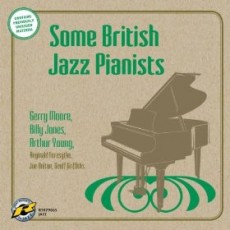
Daily Dose Of Jazz…
Gerry Moore was born Gerald Asher Moore on October 8, 1903 in London, England A pianist, he spent the years 1922-1939 working freelance jazz gigs in his hometown, playing movie palaces and nightclubs. Among the clubs in which he worked are Sherry’s and the Empress Rooms through the Twenties and in the 30s he played Chez Rex Evans, the Bag o’ Nails, the 43 Club and Mema’s.
In 1939 Gerry worked with Buddy Featherstonhaugh, Adelaide Hall, Vic Lewis, Max Geldray along with Carlo Krahmer at the Paris Jazz Fair and the Palm Beach Hotel in Cannes. He played with Harry and Laurie Gold and worked as a pianist on the Queen Mary and Caronia in the Fifties. From the mid-1960s up until his passing on January 29, 1993 in Twickenham, pianist Gerry Moore played the clubs of London.
More Posts: piano
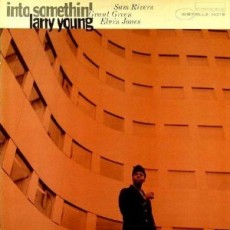
Daily Dose Of Jazz…
Larry Young was born on October 7, 1940 in Newark, New Jersey. He played the organ with various R&B bands in the 1950s before gaining jazz experience with Jimmy Forrest, Lou Donaldson, Kenny Dorham, Hank Mobley and Tommy Turrentine. He began recording as a leader for Prestige from 1960, making a number of soul-jazz discs, Testifying, Young Blues and Groove Street.
Larry moved to Blue Note in 1964, his music began to show the marked influence of John Coltrane and during this period, he produced his most enduring work. He recorded many times as part of a trio with guitarist Grant Green and drummer Elvin Jones. Into Somethin’ with saxophonist Sam Rivers became Young’s Blue Note debut, though 1965’s Unity remains his best-known album featuring Joe Henderson and a young Woody Shaw.
Young’s subsequent Blue Note albums like Contrasts, Of Love and Peace, Heaven On Earth and Mother Ship drew on elements of the ’60s avant-garde, and utilized local Newark musicians. He then became a part of some of the earliest fusion experiments: first in “Lifetime”, then “Emergency!” with Tony Williams and John McLaughlin, and also on Miles Davis’s Bitches Brew. Branching out, Larry was also known to rock fans for a jam he recorded with Jimi Hendrix on the album Nine to the Universe.
Organist Larry Young, also known as Khalid Yasin (Abdul Aziz), who pioneered a modal approach and whose characteristic sound involved management of the stops on the Hammond organ, producing overtone series that caused an ethereal, drifting effect; a sound that is simultaneously lead and background, passed away on March 30, 1978 in New York City.
More Posts: organ
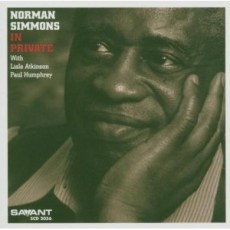
Daily Dose Of Jazz…
Norman Simmons was born on October 6, 1929 in Chicago, Illinois. As a child he was captivated by the sounds of the big band era, in particular, Duke Ellington’s orchestra. He started teaching himself piano and by sixteen enrolled in the Chicago School of Music, completing in four years.
In 1949 Norman formed his own group and began recording in 1952. An accomplished composer his tune “Jan” was a hit for tenorist Paul Bascomb the following year. Keeping a steady gig at the noted Chicago jazz spot “The Beehive” gave him the opportunity to back touring musicians like Wardell Gray, Lester Young and Charlie Parker. But it was Ernestine Anderson who convinced him to move to New York City to continue working with her.
In New York Simmons performed with Johnny Griffin and played and wrote intricate arrangements for Eddie “Lockjaw” Davis. Upon the latter’s recommendation he teamed up with Carmen McRae for nine years before moving on with Betty Carter and Anita O’Day where he found greater improvisational freedom. Late in the 70’s decade he began his long collaboration with Joe Williams and would work with Helen Humes and Sarah Vaughan among others.
As an educator he has taught at Paterson State College since 1982, participated in the Jazzmobile program for over twenty years, and has fostered music in public schools. Pianist Norman Simmons’ arrangement of Ramsey Lewis’ 1966 hit of “Wade In The Water” became a large commercial success, he was a member of the Ellington Legacy Band beginning in 2002 and he currently continues to perform, compose and arrange.
More Posts: piano
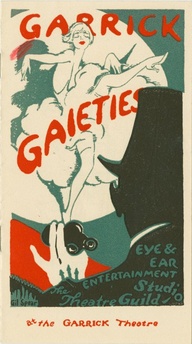
From Broadway To 52nd Street
The year was 1926 and much to everyone’s surprise Garrick Gaities was so well received that it was brought back for a regular run. Sterling Holloway appeared in all of the sequels and Edith Meiser appeared in all but the final one. Notable performers included Imogene Coca and Rosalind Russell.
The music and lyrics for this second edition of the Gaieties was written by Rodgers and Hart and introduced their famous song “Mountain Greenery”, which would go on to become a jazz standard.
Jazz History: “The Street”, as it would come to be known, couldn’t have come into existence without the assistance of the New York City Board of Estimate, who on December 10, 1926 passed a resolution lifting residential restrictions on the brownstones between 5th and 6th Avenues. With the new or old owners gaining the ability to command higher rents from the illicit speakeasy owners than ordinary apartment dwellers or even the kept women who occupied many a brownstone apartment, the inevitability of 52nd Street was born.
Sponsored By
www.whatissuitetabu.com
More Posts: broadway



